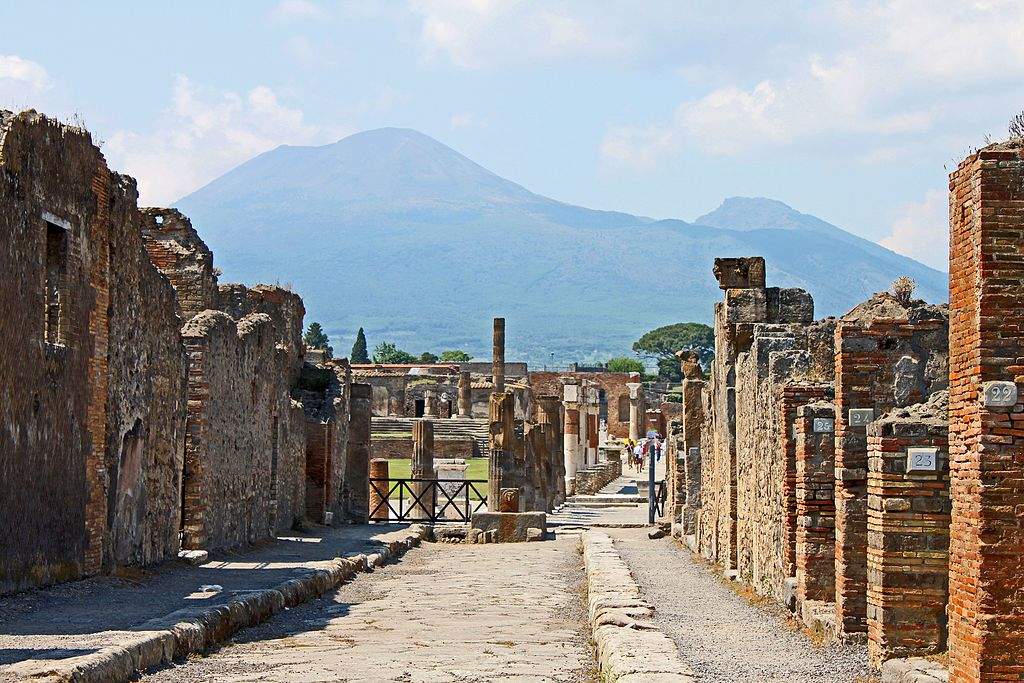Unesco, expanded Buffer Zone of Pompeii-Herculaneum-Torre Annunziata site after decade-long process
The World Heritage Committee has approved the proposed extension of the Buffer Zone of the UNESCO site "Archaeological Areas of Pompeii, Herculaneum and Torre Annunziata," at the end of a process that lasted about 10 years.
Ten municipalities are involved and gravitating in the territory of the new Buffer Zone, which now reaches atotal extension of 17.26 square kilometers that includes Portici, Herculaneum, Torre del Greco, Torre Annunziata, Boscoreale, Boscotrecase, Terzigno Trecase, Pompeii and Castellammare di Stabia.
The approved proposal was put forward in 2021 and its formulation stems from the coordinated work conducted by the Pompeii Archaeological Park and the Herculaneum Archaeological Park, in synergy with the UNESCO Office of the Ministry of Culture. The new perimeter of the buffer zone takes into account a number of requests and suggestions put forward by the World Heritage Committee, and stems from the shared intention to strengthen the strategies for the protection of the serial site and to inspire the redevelopment and regeneration activities of the surrounding territories by these. Central to the proposal submitted by the Ministry was the protection of the landscape and views to and from archaeological sites.
In the meantime, the target territory has been the subject of a strategic plan, the objectives of which are to enhance the area’s tourist attractiveness, improve accessibility to the sites of culture, environmentally restore degraded and compromised landscapes, and urban regeneration. For the implementation of the strategic plan during 2022, the Institutional Development Contract (CIS) “Vesuvius-Pompeii-Naples” was signed, which provides for the financing of twenty projects for a total of 156 million euros and an additional fourteen interventions, assessed as high priority by the Ministry of Culture and directly funded for a total of more than 70 million euros.
At present, the management plan related to the UNESCO Site is being drafted and updated, oriented towards participatory governance through agreements with local authorities, partnerships with private entities, associations, foundations and businesses, actively involving citizens who are called upon to protect and enhance the priceless heritage of this place.
“UNESCO’s approval of the expansion of the Pompeii-Herculaneum-Torre Annunziata buffer zone is an important result and the achievement of a fundamental objective in the path of continuous enhancement, protection and sustainable development of an area rich in extraordinary historical evidence with the universal value of a World Heritage site,” said Minister of Culture Gennaro Sangiuliano. “This is a confirmation of the far-sightedness of the project, which now receives a further boost to the realization of that great archaeological area that transcends the boundaries of individual cities to bring them together in a large, unique site. My thanks for the work done go to the mayors of the municipalities involved, to the directors of the Archaeological Parks of Pompeii and Herculaneum, Gabriel Zuchtriegel and Francesco Sirano, to the UNESCO Office of the Ministry, and to all those who have been involved. Now, thanks to funding from the ’Vesuvius-Pompeii-Naples Institutional Development Contract’ and additional funds made available by the Ministry, it is time to implement those projects that will bring further sap and growth to the whole area.”
“We are overjoyed to have achieved this success, the result of a team effort for which I thank the Ministry of Culture, the Great Pompeii Unit and our colleagues in Herculaneum,” said Pompeii Archaeological Park Director Gabriel Zuchtriegel. “With the new Buffer Zone, our vision of the ’Greater Pompeii,’ a network of sites in which we will invest more than 230 million euros in the coming years, finally finds an appropriate institutional framework that sees the main players in the area gathered around a table. Today we have the opportunity, thanks also to digital, to make the sites around Pompeii a large widespread park that allows visitors to discover an area rich in culture and traditions, and this is our priority.”
“One can only express satisfaction with this approval, which appears to be a marked improvement on the approach inherited from the time of the site’s inscription as a World Heritage Site,” added Herculaneum Archaeological Park Director Francesco Sirano. “The proposal stems from the desire to share and promote the common recognition of the wonderful and unique relationship between the ancient city of Herculaneum, the territory and the communities around it, opening the perspective toward the cultural and scenic riches at the foot of the volcano that map the history of this place before and after the eruption of 79 AD. It seems to me that I can hope that also thanks to this Buffer Zone we can advance in the work of engagement and awareness that we carry on also thanks to the more than 20-year public-private partnership with the philanthropic Packard Humanities institute: ancient Herculaneum is not an island in the sea of past and distant time, but part of a living landscape with many layers of history, culture, lives and human personalities.”
Photo by Carlo Pelagalli
 |
| Unesco, expanded Buffer Zone of Pompeii-Herculaneum-Torre Annunziata site after decade-long process |
Warning: the translation into English of the original Italian article was created using automatic tools. We undertake to review all articles, but we do not guarantee the total absence of inaccuracies in the translation due to the program. You can find the original by clicking on the ITA button. If you find any mistake,please contact us.




























